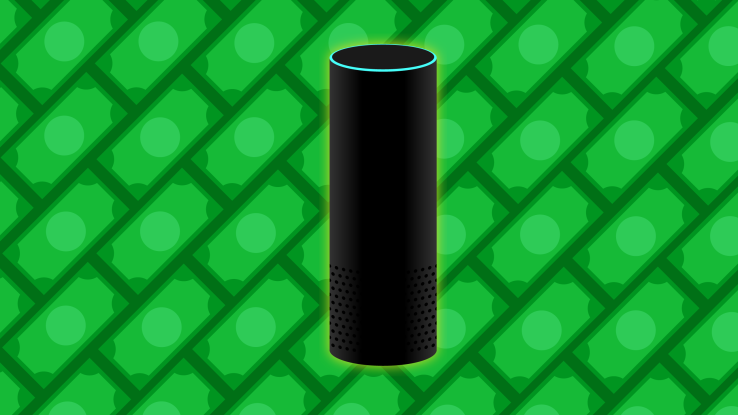

For Amazon, hardware has always been a means to an end. From the Kindle e-reader to the Fire tablets to its TV offerings, the company has always treated the space as something of a loss leader – even with its most popular offerings. Amazon has found success in pricing devices much closer to cost than the competition – something a company can only really get away with if it plans to make up for things somewhere down the road, like, say if you’re in the content selling business.
The Echo line is no different, of course. The goal of the hardware hub is simple: to seed living rooms with its smart assistant and become an essential part of the connected home. The desktop-mounted devices were a first step toward getting Alexa into the world, and while the company has made it clear it isn’t done with the Echo line (as evidenced by the recent launch of the Look), it’s ready to let other companies do the heavy lifting.
The actual success of the Echo line took most (likely Amazon included) by surprise. The company never likes to give out exact numbers when it comes to hardware, but by all accounts, the products have been a massive success. Over the holidays, it noted that it had sold 9x as many Echo devices as it had the previous year, only saying that the number was in the “millions.”
But the next phase in Amazon’s master plan has been rolling out for the past year-and-a-half, as the company has not only embraced third-party hardware makers – it’s actively engaged them. Last week, Amazon joined component company Conexant to announce the release of the AudioSmart Development Kit for Alexa Voice Service – a second dev kit aimed at streamlining the process of bringing Alexa voice functionality to their devices.
The day prior, smart appliance maker Ecobee announced that the Amazon’s smart home assistant would be a part of its products in a big way, moving forward. It would start with a new version of the company’s connected thermostat built using an earlier version of the Conexant dev kit. Later in the year, it will be bringing the functionality to connected light switches, with the semi-ominous goal of “weaving the power of voice into the walls of entire households.”
The thermostat marked something of a departure from many Alexa-enabled devices before it, in that it wasn’t simply the addition of an Alexa skill to an existing product. Nor was it a desk-mounted device designed to compete directly with the Echo line. Only a few of its voice-enabled functions actually pertain to thermostat features. The other 12,000 or so essentially make the product an Echo surrogate, silently waiting for its wake word.
It’s proof of concept for the company that Alexa is just as good outside the Echo. More to the point, it’s the tip of a growing trend in which third-party manufacturers help spread the Alexa gospel. It’s no coincidence, of course, that Ecobee was a $35 million recipient of Amazon’s Alexa Fund, a VC campaign that “believe[s] experiences designed around the human voice will fundamentally improve the way people use technology.” And, you know, promoting the company’s own titular assistant a bit along the way doesn’t hurt, either, right?
Amazon happily tosses out a number from RBC that puts Alexa on 128 million devices by the end of 2020 (with roughly half that number sold that year). It seems like a stretch at the current rate, but adoption certainly does appear to be snowballing – a particularly impressive feat given that the fact that unlike Siri and Google Assistant, the product didn’t have smartphones as a jumping off point.
Though, in recent months, the assistant’s success has been large enough in North America that a handful of smartphone markers have eschewed Google’s offering in favor of Amazon, which is no doubt something of a sweet revenge for a company that failed so publicly in its own attempt to launch a smart home offering.
But while Echoes will likely continue to see for some time, thanks in part to regular refreshes of the line, Amazon is working on its own planned obsolescence. The more the functionality is baked into third-party products, the less need users will have for their own standalone Echo devices. And that’s perfectly fine for Amazon.
The Echo line has done its job better than Amazon could have imagined, putting the company well ahead of Apple and Google with regards to penetrating the smart home. For millions of users, the Echo will be their first dip in the waters of the connected home. They purchased an Echo because of the neat tricks they say on TV or the recommendation of a friend. The fact that it can control the high tech smart lights they had their eye on is just a bonus.
Amazon has done the hard work of getting Alexa out into the world. The next couple of years, the burden of follow through will be on the many hardware partners looking to the cash in on Alexa’s success. And on Apple and Google, who have a lot of catching up to do.
Featured Image: Bryce Durbin

